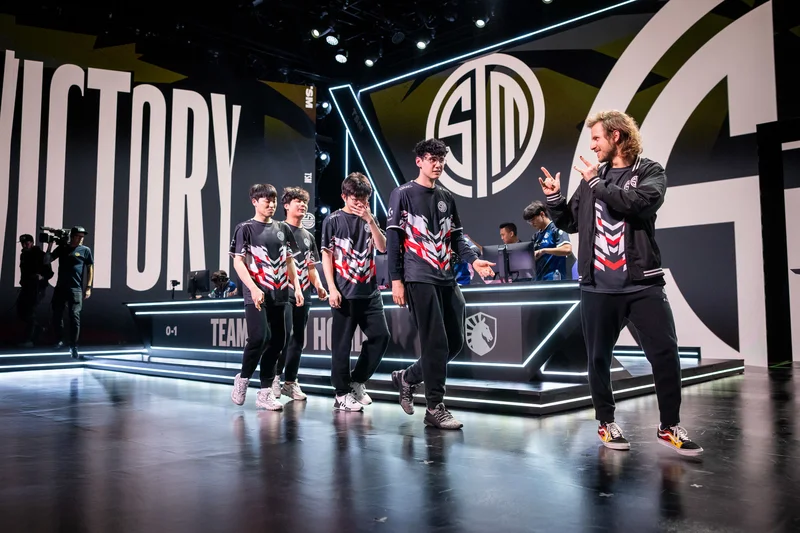It’s not often that a simple portfolio adjustment sends a clear signal through the noise of the market, but Steve Weiss’s recent trim of his Taiwan Semiconductor (TSM) position is one of those moments. According to Analyst Trims His Taiwan Semiconductor (TSM) Stake Amid a New ‘Concern’ - Yahoo Finance, Weiss, the founder of Short Hills Capital Partners, was quick to clarify that TSM remains his largest holding. This wasn’t a panicked sell-off. It was a calculated, almost clinical, reduction of risk.
He cited a simple reason: the position had "gotten too big." But beneath that boilerplate portfolio management explanation lies a far more interesting observation. Weiss pointed to the "incongruity" of watching TSM's stock price climb in lockstep with the shares of defense contractors.
This is the kind of data discrepancy that should make any serious analyst pause. Think about it. One asset, TSM, is rising on the promise of a future powered by artificial intelligence, a narrative of boundless growth and technological supremacy. Its chips are the bedrock for everything from `nvda` to `amd stock`. The other asset class, defense stocks, rises on the probability of conflict, instability, and geopolitical friction—specifically, the friction centered on the very island where TSM fabricates the overwhelming majority of its world-leading chips.
When two datasets that should, by all logical measures, be negatively correlated start moving in the same direction, something is wrong. It suggests the market is either irrational or, more likely, is choosing to ignore a variable it finds inconvenient. Weiss didn't run for the exits. He simply took some chips off the table. The real question is, why aren't more people doing the same?
The Fault Line Under the Foundry
To understand the bull case for TSM is to understand its near-monopolistic power. As Brown Advisory noted in a recent investor letter, the company's dominance in leading-node manufacturing allows it to capture immense market share from the insatiable demand for AI infrastructure. TSM isn't just a player in the semiconductor game; it is the game board itself. Every major tech giant, from `amzn` with its cloud services to `tsla` with its self-driving ambitions, pays tribute to Taipei.
This makes TSM a fantastic business. But a fantastic business and a fantastic stock are two very different things, especially when the business's primary fabs are located in what Weiss correctly identifies as "ground zero."
The market’s current valuation of TSM feels like admiring a magnificent skyscraper built on a known seismic fault line. Everyone is mesmerized by the architecture—the soaring earnings, the technological moat, the incredible demand from the AI boom. They praise the engineers and marvel at the height. But no one seems to want to look at the seismograph. Weiss looked at the seismograph. He saw the needle jumping and decided to move some of his assets to a lower floor.

This isn't just an abstract geopolitical risk anymore. It’s a tangible factor that is already creating friction. We're seeing reports that both TSM and Micron (`mu stock`) are downsizing their ambitious multi-billion dollar onshoring plans right here in the U.S. Why? Because of a stunningly basic calculation error: they reportedly didn't factor in that chips made in their shiny new American fabs would face outgoing tariffs when exported to customers in other countries. I've analyzed hundreds of corporate expansion plans, and for a company with the operational discipline of TSM to overlook such a fundamental aspect of trade logistics is, to put it mildly, peculiar. It suggests the onshoring push was driven more by political pressure than by a sound, independent business case.
This tariff issue is the first tremor. It’s a small, practical sign that decoupling the world’s most critical supply chain is not a clean or easy process. It’s messy, expensive, and fraught with unforeseen complications. If companies are struggling with basic tariff math, how can we be confident they have adequately priced in the risk of a naval blockade?
The Narrative vs. The Numbers
The core of the problem is a battle between a powerful narrative and a set of inconvenient numbers. The narrative is AI. It’s a story of exponential growth, and it’s an easy one to sell. The numbers represent risk. They involve probabilities of conflict, supply chain disruptions, and the high costs of geographic diversification. Narratives are exciting; risk models are boring. The market is currently addicted to the narrative.
When Weiss talks about incongruity, he’s talking about this divergence. The `tsm stock price` reflects the AI narrative almost perfectly. But does it reflect the risk? If the market were truly pricing in the "ground zero" variable, we'd expect to see a persistent "geopolitical discount" on TSM's valuation compared to, say, Intel (`intel stock`), despite Intel's manufacturing lag. We see some of that, but it feels insufficient—perhaps a 10% discount when the reality of the situation might warrant something closer to 30%, maybe even 40%. To be more precise, the implied probability of a disruptive event priced into the stock seems orders of magnitude lower than what any sober geopolitical analyst would suggest.
This is where the retail investor, and even many institutional ones, gets burned. They buy the story. They see `nvda stock` screaming higher and logically conclude that its primary manufacturer, TSM, must follow. And it has. But correlation is not causation, and it certainly isn't a substitute for a full risk assessment. What happens to the AI revolution if the world's premier foundry is suddenly taken offline, even for a few weeks? The ripple effects would be catastrophic, making the COVID-era supply chain crunch look like a minor inconvenience.
The decision by Weiss is the most rational action in a market that seems to have temporarily suspended its rationality. He isn't saying the AI narrative is false. He is simply acknowledging that both narratives—the AI boom and the China risk—are simultaneously true. And when two powerful, opposing forces are at play, you don’t double down; you de-risk. You acknowledge the size of the potential reward but respect the magnitude of the potential loss.
The Market Is Pricing The Reward, Not The Risk
Let's be perfectly clear. Steve Weiss trimming TSM is not an indictment of the company's technological prowess or its central role in the future of computing. It's an indictment of the market's inability to price two things at once. The current `tsm stock price` is a beautiful, clean reflection of the upside from AI. It is not, however, a reflection of the messy, complex, and deeply unsettling geopolitical reality. The market has priced the reward, but it has failed to properly price the risk. Weiss's move was simply an accountant's correction, a small adjustment on a ledger that has become dangerously unbalanced. He's not betting against TSM; he's betting against market complacency. And that, historically, has been a very good trade.









